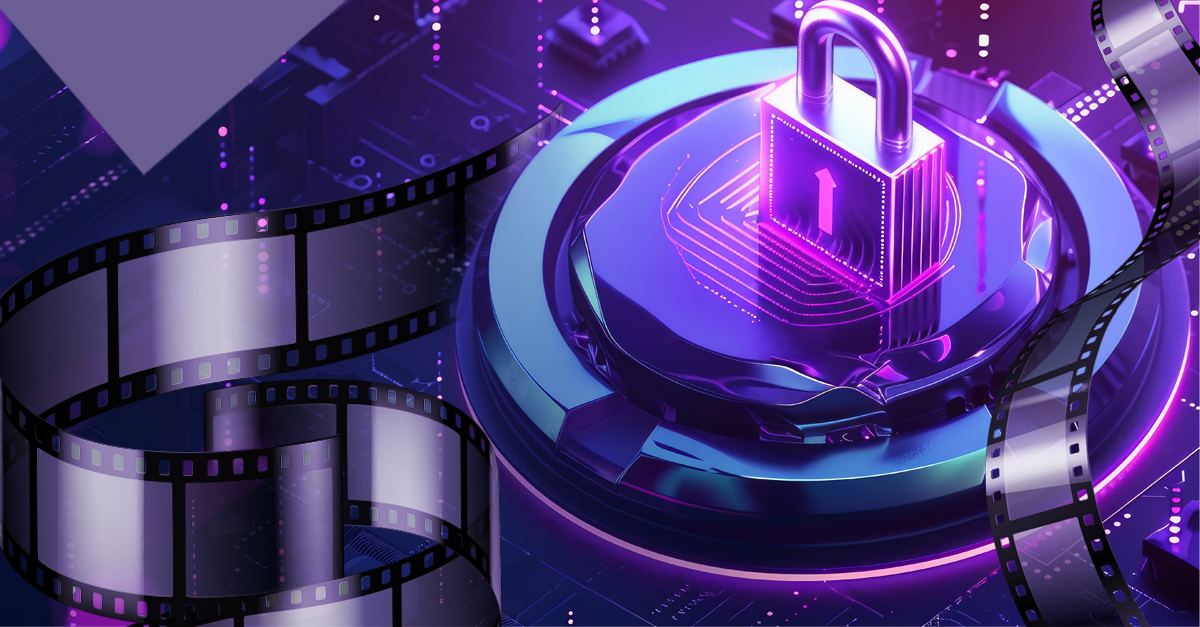In the 8 months from January to August of 2022, video piracy soared 49%. The US economy alone is estimated to lose up to $71 billion annually due to such criminal activities. Plus, downloading pirated materials takes up 24% of the global internet bandwidth. There is no dearth of these statistics from around the world and yet they reflect only a segment of the true impact of piracy. Advanced technologies, hyper-interconnectivity and the ubiquity of the Internet are inadvertently assisting pirates. So, how do you keep your intellectual property safe from theft?
The Challenge of Piracy
Piracy is a multifaceted challenge, which is becoming increasingly sophisticated and organised by leveraging the same technology that is empowering creators to produce better video content and broaden their reach. The proliferation of piracy is partially due to the easy availability of high-quality content. Unfortunately, the rising sophistication of criminal elements leads OTT distributors, sports events and video producers to lose:
- Revenue
- Ownership
- Content Value
- Reputation
- Viewership, and
In January 2023, stock image website, Getty Images, sued Stability AI for using 12 million of Getty Image’s copyrighted images without permission to train its Stable Diffusion AI model. But content giants like Getty Images and Netflix aren’t the only victims. Piracy can inflict huge damage on individuals, such as budding creators, emerging artists and upcoming videographers.
Poor State of Awareness
The democratisation of knowledgeable, creative and cultural content production has amplified content production capacity. And the deepening penetration of the Internet has made content easily accessible. Collaborative efforts by all stakeholders, including creators, distributors, regulators, platforms and intellectual rights entities, are needed to ensure the security of digital content.
The most important reason for the success of the pirates is inadequate consumer education.
- Consumers fail to differentiate between legitimate and illegal ways of accessing creative content. They believe password sharing or streaming live events is OK because they have paid for it.
- Consumers are often deluded into believing that consuming “free content” is their right. They don’t realise the price they pay for their access to this content, such as unsolicited advertisements or affiliate marketing. Of course, the larger price is being paid by content creators and owners.
- Customers are also unaware that malware from illegal online sources can steal personal and sensitive data, infect their devices and risk their privacy and security. Additionally, they risk legal action by downloading or distributing content illegally.
Therefore, consumer education is crucial to ensuring the integrity of the content ecosystem and that creators receiving the true value of their efforts. Although there are many regulations and advisories, consumers might not recognise the necessity to access entertainment through legitimate channels. Law enforcement, along with targeted measures from within the industry, is critical to tackling piracy.
Safeguard Your Content Against Piracy
While encryption and digital rights management (DRM) are embedded deep within video service providers’ business models, such measures are not enough to combat piracy or to reduce the impact of an untoward event. Digital content security has to evolve into an elegantly integrated content dissemination model. Technological advancements have armed pirates with powerful tools. It’s time to use the same technology to stay a step ahead of criminal elements. Here’s how.
Reduced Incentive and Entry Barriers
Pirates are incentivised because they make great content available at cheaper costs to regions where media companies are inactive or restricted. Therefore, an industry-wide cooperative model is required to facilitate flexible access at a fair price. Additionally, people often pay pirated websites far less for a little compromise on quality. Price is not that a big differentiator here though. Consumer experience is, such as low buffering latency and sympathetic interfaces. We might not be able to completely stop, but well-planned measures can give genuine viewers and casual pirated content consumers a chance to switch to legal modes.
Playback Restrictions
Playback restrictions, such as limited devices using multi-device passwords or timed access, allow content distributors to monitor consumption. They can also employ techniques to enforce multiple user-access levels and prevent license application and approval without user verification. But such security measures come with a trade-off against user experience, which is critical in today’s competitive entertainment landscape. Enabling smooth user experiences with multiple payment models, timed subscriptions and cross-platform access can be a huge differentiator.
Forensic Watermarking
Forensic watermarking is an effective technique to identify the source of content. It is like fingerprinting the digital content with the creators’ and distributors’ digital identifiers. While static watermarks facilitate only recognising the source, dynamic ones carry all information regarding content consumption and propagation. This helps locate the point of illegal access and blocks the incident from being repeating.
Infrared Blocking
This is a popular technique that prevents live-stream and screen recording in movie theatres. Infrared blocking needs the content to be designed in such a way that its quality is maintained while it is combined with non-human detectable waves that prevents digital devices from recapturing the media.
Quick Resolution
In case of an incident, quick discovery and termination of the vulnerability are essential. AI-powered web crawling systems and advanced environment scanners can be employed to continuously monitor for security breaches. Measures such as removing stream ripping hooks and alerting the authorities to get illegally procured media from being screened on pirated platforms can be instrumental in assisting the authorities in bringing wrongdoers to justice.
Seek Help from the Experts
Mechanisms required to detect and remove unauthorised content from the Internet requires advanced technology, which could entail significant costs for development and maintenance. Further, the unsynchronised regulatory framework can be difficult to navigate. This makes it even tough for smaller creators and distributors to build comprehensive and non-restrictive content security frameworks. They rely on data protection technology providers to safeguard their intellectual property.
Mediastalker has been redefining the digital content security space with powerful security solutions. Our piracy antidote is designed by experts with extensive experience in data protection, vulnerability assessment and cure, infringement detection, and corrective measures. Our API-based solution can be easily integrated with diverse platforms across the distribution ecosystem without downtime or migration-related data loss.
In addition, real-time reports keep our clients updated on the state of their content security from Day 1. Contact our security experts today to ensure superior protection at every stage of your content creation and distribution journey.








